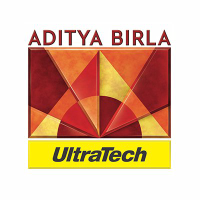Company Analysis Premier Synthetics Limited
1. Summary
Advantages
- Price (19.68 ₹) is less than fair price (26.19 ₹)
- The stock's return over the last year (-22.5%) is higher than the sector average (-24.29%).
Disadvantages
- Dividends (0%) are below the sector average (1.34%).
- The company's current efficiency (ROE=-8.15%) is lower than the sector average (ROE=11.93%)
Similar companies
2. Share price and performance
2.1. Share price
2.3. Market efficiency
| Premier Synthetics Limited | Materials | Index | |
|---|---|---|---|
| 7 days | 10.6% | 0% | -1.4% |
| 90 days | 13.4% | -11% | 7.8% |
| 1 year | -22.5% | -24.3% | 5.3% |
509835 vs Sector: Premier Synthetics Limited has outperformed the "Materials" sector by 1.79% over the past year.
509835 vs Market: Premier Synthetics Limited has significantly underperformed the market by -27.76% over the past year.
Stable price: 509835 is not significantly more volatile than the rest of the market on "Bombay Stock Exchange" over the last 3 months, with typical variations of +/- 5% per week.
Long period: 509835 with weekly volatility of -0.4328% over the past year.
3. Summary of the report
4. Fundamental Analysis
4.1. Stock price and price forecast
Below fair price: The current price (19.68 ₹) is lower than the fair price (26.19 ₹).
Price significantly below the fair price: The current price (19.68 ₹) is 33.1% lower than the fair price.
4.2. P/E
P/E vs Sector: The company's P/E (0) is lower than that of the sector as a whole (35.83).
P/E vs Market: The company's P/E (0) is lower than that of the market as a whole (44.6).
4.3. P/BV
P/BV vs Sector: The company's P/BV (0.2557) is lower than that of the sector as a whole (3.89).
P/BV vs Market: The company's P/BV (0.2557) is lower than that of the market as a whole (5.33).
4.3.1 P/BV Similar companies
4.4. P/S
P/S vs Sector: The company's P/S indicator (0.1252) is lower than that of the sector as a whole (2.98).
P/S vs Market: The company's P/S indicator (0.1252) is lower than that of the market as a whole (8.99).
4.4.1 P/S Similar companies
4.5. EV/Ebitda
EV/Ebitda vs Sector: The company's EV/Ebitda (0) is lower than that of the sector as a whole (16.5).
EV/Ebitda vs Market: The company's EV/Ebitda (0) is lower than that of the market as a whole (15.13).
5. Profitability
5.1. Profitability and revenue
5.2. Earnings per share - EPS
5.3. Past profitability Net Income
Yield Trend: Negative and has fallen by -433.66% over the last 5 years.
Accelerating profitability: The return for the last year (0%) exceeds the average return for 5 years (-433.66%).
Profitability vs Sector: The return for the last year (0%) exceeds the return for the sector (-10.55%).
5.4. ROE
ROE vs Sector: The company's ROE (-8.15%) is lower than that of the sector as a whole (11.93%).
ROE vs Market: The company's ROE (-8.15%) is lower than that of the market as a whole (-1.52%).
5.5. ROA
ROA vs Sector: The company's ROA (-5.72%) is lower than that of the sector as a whole (7.34%).
ROA vs Market: The company's ROA (-5.72%) is lower than that of the market as a whole (7.42%).
5.6. ROIC
ROIC vs Sector: The company's ROIC (0%) is lower than that of the sector as a whole (13.04%).
ROIC vs Market: The company's ROIC (0%) is lower than that of the market as a whole (13.44%).
7. Dividends
7.1. Dividend yield vs Market
Low yield: The dividend yield of the company 0% is below the average for the sector '1.34%.
7.2. Stability and increase in payments
Unstable dividends: The company's dividend yield 0% has not been consistently paid over the past 7 years, DSI=0.
Weak dividend growth: The company's dividend yield 0% has been growing weakly or stagnant over the past 5 years. Growth over only 0 years.
7.3. Payout percentage
Dividend Coverage: Current payments from income (0%) are at an uncomfortable level.
Pay for your subscription
More functionality and data for company and portfolio analysis is available by subscription


